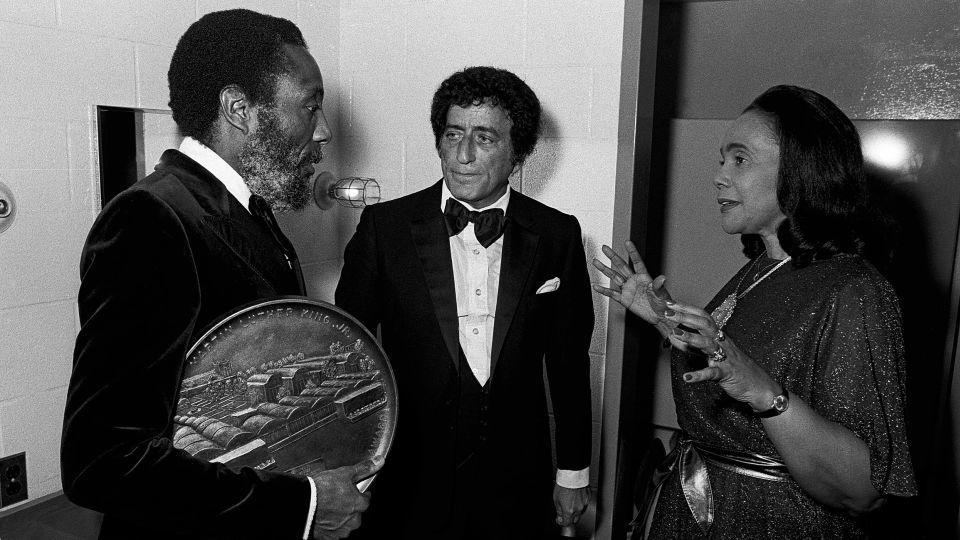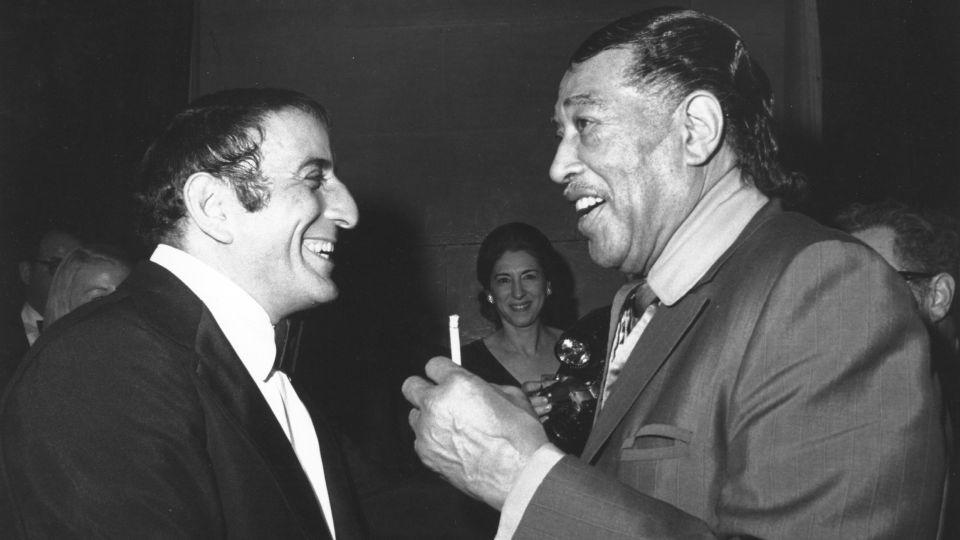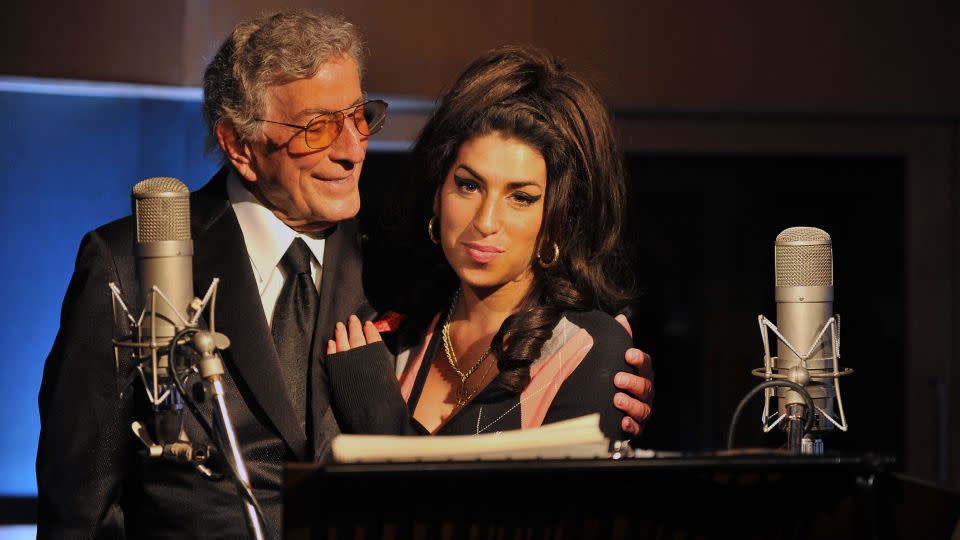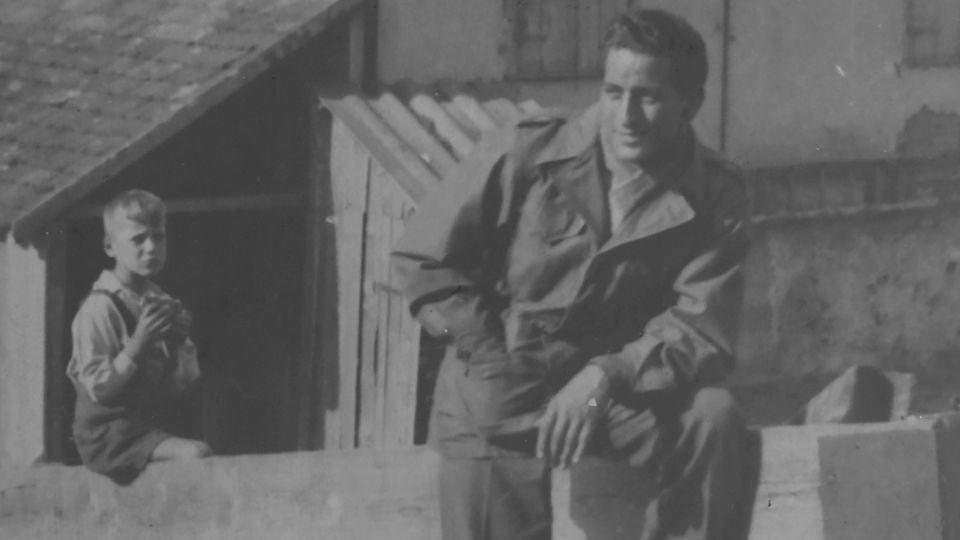Tony Bennett sang in a key that Jason Aldean’s song can’t reach
- Oops!Something went wrong.Please try again later.
- Oops!Something went wrong.Please try again later.
- Oops!Something went wrong.Please try again later.
- Oops!Something went wrong.Please try again later.
- Oops!Something went wrong.Please try again later.
One dreary Christmas Eve, singer Tony Bennett found himself alone and miserable in New York City’s Gotham Hotel.
His first marriage was crumbling. His two sons were at home with his soon-to-be ex-wife. It was 1965, and the arrival of four mop-haired British rock and rollers the year before on Ed Sullivan’s show signaled the beginning of Beatlemania, and what seemed like the end of his jazz career.
Bennett tried to sleep off his depression, but the sounds of a choir roused him from his bed. He padded to another room to turn off the TV before realizing that chorale music was coming from outside his hotel room. He opened the door to see a choir singing a joyous rendition of “On a Clear Day You Can See Forever.”
Turns out the great Duke Ellington, jazz music’s greatest composer, and another musician buddy had dispatched a choir to cheer up their pal.
“I realized, ‘Wow, what great friends,’ ” Bennett recalled later in an essay in the Toronto Star. “To take the time out to think of someone else.”
Timing, in jazz as in life, is everything. Few knew that better than Bennett, the incomparable jazz titan who died last week at 96. He could recall that unexpected Christmas gift decades later because it came at the precise time that he needed cheering up.
But there’s also something about the timing of Bennett’s passing that makes our loss cut a bit deeper.
Bennett died the same week that country singer Jason Aldean found controversy with his hit song, “Try That in a Small Town.” The song, which celebrates what Aldean calls “good ol’ boys” ready to grab their guns and go after those who carjack old ladies and rob liquor stores, is the most popular country song in the US. The song’s video, which was filmed outside a Tennessee courthouse where a White mob once lynched a Black man, has received more than 21 million YouTube views. One writer has called it “the song of the summer” for right-wing America.
Others have had a different reaction. Critics say Aldean’s video is full of racist innuendo and encourages White vigilante violence. Aldean has denied the song or video is racist, tweeting: “I have been accused of releasing a pro-lynching song … and was subject to the comparison that I (direct quote) was not too pleased with the nationwide BLM protests. These references are not only meritless, but dangerous. There is not a single lyric in the song that references race or points to it — and there isn’t a single video clip that isn’t real news footage…”
The video was recently edited to remove images of violent confrontations during a Black Lives Matter protest.

But the best example for what’s tone deaf about Aldean’s song and video hasn’t come from pundits or politicians. It came from Bennett — in the stories of how he sang and lived. The many tributes to Bennett can also be read as a rebuke to the artistic sensibility that gave us “Try That in a Small Town.”
Bennett sang and lived in a key that Aldean’s song can’t reach – because of two factors that grew out of the late singer’s love for jazz.
White jazz artists were antiracists before the term was invented
Many of the tributes to Bennett mentioned his disdain for bigotry. He was demoted for bringing a Black soldier home for Thanksgiving dinner during World War II; spoke of how he “saw no things a human being should ever have to see” while helping liberate a Nazi death camp; joined marches during the civil rights movement; and did extensive philanthropic work.
What some of those tributes missed, though, is that Bennett’s activism didn’t occur in a vacuum. He had great role models. Many White jazz artists were antiracists, long before the word was invented.
Frank Sinatra, Bennett’s musical mentor, recorded with and relentlessly championed Black jazz artists like Ella Fitzgerald and Count Basie. When Sinatra once noticed singer Nat King Cole eating dinner in a hotel dressing room, he invited him to the main dining room, where Black people were not allowed. Sinatra then warned the hotel’s management that he would get the entire serving staff fired if they didn’t integrate the dining hall.
Jazz pianist Dave Brubeck led the first integrated band in the US Army during World War II. He hired a Black jazz bassist, Eugene Wright, and refused to play in segregated venues.
The big band leader, Benny Goodman, brought a half-dozen Black musicians with him onstage at Carnegie Hall in 1938 when it, and virtually all performance venues, were segregated.
Bennett’s activism was an outgrowth of his music, not a complement to it. His relationships with Black people may not seem like a big deal now, but he and others risked their careers to stand up for Black artists during the Jim Crow era. At a time when most White Americans saw Black people as servants, Bennett called musicians like Ellington and Louis Armstrong geniuses who created what some call “America’s only true art form.”
“Jazz is an African American art form. People don’t realize how creative and intelligent it is,” Bennett said in one interview. “It’s elongated improvisation, which never happened before in the history of art. It’s a great art form that’s loved throughout the world.”
Bennett belongs to a generation of jazz artists who created one of the nation’s first multiracial communities. There are countless photos of a beaming Bennett hanging out with Black jazz artists. Ellington, who Bennett called “my muse,” was virtually a member of Bennett’s family.
When Lionel Hampton, a Black member of Goodman’s band, was asked why Goodman risked his career to bring White and Black artists together, he responded:

“He said we need the White keys and the Black keys to play together to make good harmony. And that’s what he did.”
Bennett came from a tradition where people weren’t threatened by differences
One of the most touching moments from Bennett’s career was something he did in a music studio when few people were watching. In 2011, he recorded a duet with Amy Winehouse, the talented but troubled British singer and songwriter who would die of alcohol poisoning four months after their session.
Winehouse, fidgety and talking a mile a minute, confessed she was intimidated by singing with Bennett. They started off singing the jazz standard, “Body and Soul,” but she abruptly stepped away from the microphone, disparaging her own performance and saying, “I don’t want to waste your time.”
But Bennett showed no hints of frustration or anger. He told her a funny story and assured her in a soothing voice that she was getting better with each take.
“We’ll keep doing until we got one, okay?” he said to Winehouse, like a father to a nervous daughter. “You’re not in any hurry, are you? I’m not either. So we have time.”
Winehouse was an artist from a different generation, genre and culture who was crumbling before his eyes during a high-stakes recording session. But he kept trying to build a bridge to her so they could make something beautiful together.
And they did, finally getting a take right. When the song ended, Winehouse broke into a bright smile and wrapped Bennett in a hug.
Many tributes to Bennett talked about his legendary duets with such artists who seemed so unlike him, including Lady Gaga, John Mayer and Elvis Costello.
But something else besides Bennett’s unflappability made these collaborations work. Bennett wasn’t threatened by people who were not like him. They inspired him. This, too, reflects the jazz sensibility that Bennett absorbed.
Jazz artists are known for seeking out artists and music that doesn’t seem natural to them. Brubeck, the jazz pianist, infused his music with exotic rhythms and melodies he heard during tours of Turkey and Japan. Miles Davis stepped away from his acoustic band and incorporated psychedelic rock and funk into his music while listening to Jimi Hendrix. The jazz pianist Bill Evans was heavily influenced by classical music.
Jazz artists gravitate toward differences, and instinctively aim to erase categories.

The Aldean song and video evokes a violent, contentious America where there are not duets, just division. It’s big city vs. small town; patriots vs. people who “stomp on the flag” and “good ol’ boys” with guns vs. — well, cue the video’s now-deleted Black Lives Matter imagery and you can guess who the song appears to be talking about.
In jazz, though, conflict is negotiated through collaboration, not condescension. Bennett was a prime example of that.
His many duets with artists from other genres “showed how he (Bennett) was open to the collaborative spirit that you find in jazz,” says Greg Thomas, co-founder of the Jazz Leadership Project.
“If you were hung up on race and very rigid and very threatened by people who were different, you might be able to be good (at jazz),” Thomas says. “I don’t know if you could be great. Because to be great, you have to be willing to play beyond your comfort zone.”
Why jazz teaches ‘the very opposite of racism’
That collaborative spirit, of course, is not confined to jazz. It exists in all music genres – including country.
Bennett also sang duets with country artists like Carrie Underwood, Faith Hill and Willie Nelson.
And county music star Billy Ray Cyrus teamed up with Black hip hop star Lil Nas X to turn “Old Town Road” into a massive crossover hit in 2019. Aldean represents just one slice of the diverse country music genre.
But the peculiar demands of playing jazz music — musicians improvising and responding to one another’s solos in a group setting — is one reason some say that no musical genre captures the democratic spirit in America as perfectly as jazz.
“Jazz means working things out musically with other people,” the jazz trumpeter Wynton Marsalis once said. “You have to listen to other musicians and play with them even if you don’t agree with what they’re playing. It teaches you the very opposite of racism and anti-Semitism. It teaches you that the world is big enough to accommodate us all.”
Given his love for embracing differences, it’s no wonder that Bennett – born Anthony Dominick Benedetto into a family of Italian immigrants – talked with so much pride about being an American citizen.

“It’s really a gift to be a citizen of the United States,” he said once in an interview with Thomas. “We should respect the best of each nationality and each religion, instead of criticizing one another.”
Music, like any art form, is subjective. There are those who see nothing wrong in Aldean’s song or video. They invoke his right to free speech. They say his song has nothing to do with race, just as he does. It’s all about celebrating small-town values.
But the contrast between the America that Bennett evoked and the one that Aldean describes is striking. Bennett assured listeners that “the best is yet to come.” He refused to pander to audiences, insisting that the sole purpose of art was “truth and beauty.” He reached across racial lines, cultures and generations to find common ground.
There was nothing small about the man or his music.
Aldean may indeed have the song of the summer. But Bennett sang for the ages.
John Blake is the author of “More Than I Imagined: What a Black Man Discovered About the White Mother He Never Knew.”
For more CNN news and newsletters create an account at CNN.com

